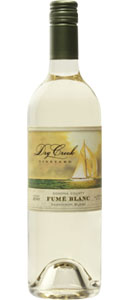 There are moments that serve as powerful reminders of why I am so enthralled by the beauty of wine. When the mundane and pedestrian of daily life – no complaint here, just an observation of the very nature of what we essentially term as “everyday” – one needs these reminders to keep the thrill alive. One such moment came last month in the heart of the American rust belt. An unlikely place for sure. Proving the popularity of wine has spread truly far and wide.
There are moments that serve as powerful reminders of why I am so enthralled by the beauty of wine. When the mundane and pedestrian of daily life – no complaint here, just an observation of the very nature of what we essentially term as “everyday” – one needs these reminders to keep the thrill alive. One such moment came last month in the heart of the American rust belt. An unlikely place for sure. Proving the popularity of wine has spread truly far and wide.
Let me digress a moment from the subject of this piece and dwell on the popularity of wine. In a recent column, Eric Asimov shared the story of a Sandy ravaged restaurant in Brooklyn. This upscale watering hole reported bar sales of 90% liquor and 10% wine circa early eighties. Fast forward to today and the ratio is reversed to 90% wine and 10% liquor. I would attribute this dramatic turn in part to availability of good wines at affordable prices and the health benefits touted in recent times. A big part of it however, is good old “crowd mentality” – a theory that postulates that beyond a threshold of aesthetic beauty and intrinsic value, the hype surrounding a work of art (and I do consider wine an art form) gives it popularity far in excess of its core allure. It explains as much the mythical status of Leonardo da Vinci’s Mona Lisa as that of legendary vintage Bordeaux’s.
For sure the quality of average quaffing wines today is impressive. It is also true that the hype surrounding some is far in excess of their charm. It does not help that winemakers strive to create the same complexity and flavor profile that is perceived as “great”, leaving little room for distinctiveness and uniqueness of character in their creations.
 Back to the gem uncovered on the shores of Lake Erie – in Cleveland to be exact. A Dry Creek Vineyards Fume Blanc, Sonoma, 2012.
Back to the gem uncovered on the shores of Lake Erie – in Cleveland to be exact. A Dry Creek Vineyards Fume Blanc, Sonoma, 2012.
At a delightful Zack Bruell restaurant – Cowell & Hubbard – in the heart of historic Playhouse Square off Euclid Avenue in downtown Cleveland. Served at the exact right temperature – cool but not cold – one had to take only a whiff to appreciate the extraordinary nature of this creation. It proved emphatically – if proof was needed – that the majority of pleasure derived from wine is in its aroma. The citrusy tartness on the nose cut through complex fruit. A hint of smoke and a bitter finish took it over the edge from good to great. Almost afraid to ingest lest the taste not live up to the aroma – I took a tentative sip. Happily, it made the wine even greater. The minerality and herbal, grassy character was more pronounced on the palate than on the nose. This was a perfect pairing with my dinner. A great complement to the starter – sunchoke salad with hazelnuts and truffle oil – as well as the main course – Whitefish with Spinach and Quinoa.
Cheers to Robert Mondavi for introducing this style of Sauvignon Blanc to Napa. We are lucky to be enjoying the fruits of his labor. 3,000 miles from the Loire Valley .
The thrill is NOT gone baby…..it survives ……and thrives……..

![k9808650[1]](https://vinological.wordpress.com/wp-content/uploads/2013/05/k980865011.jpg?w=640)

















